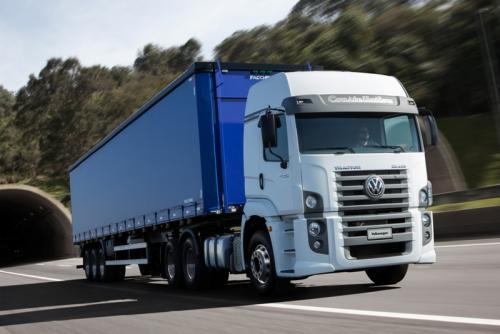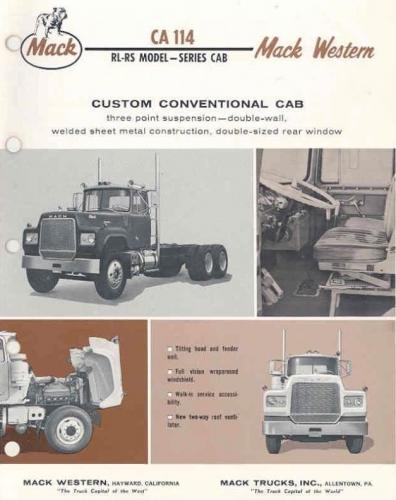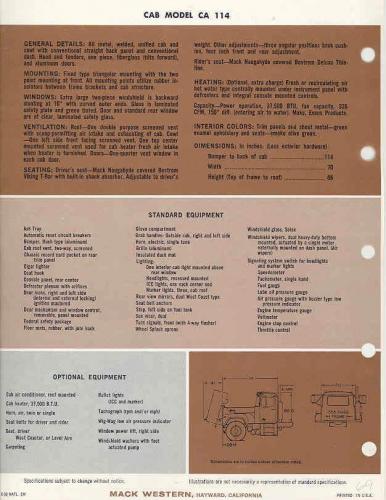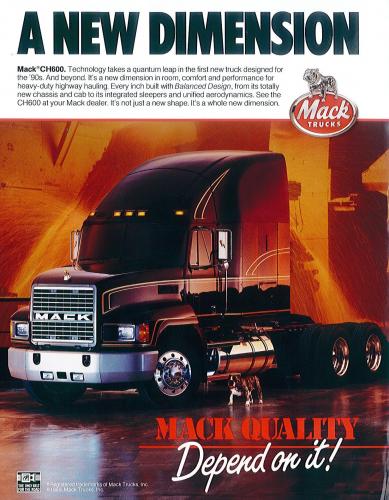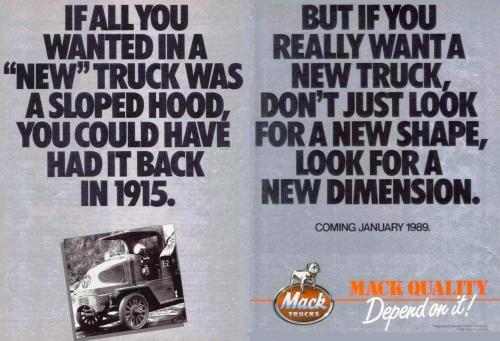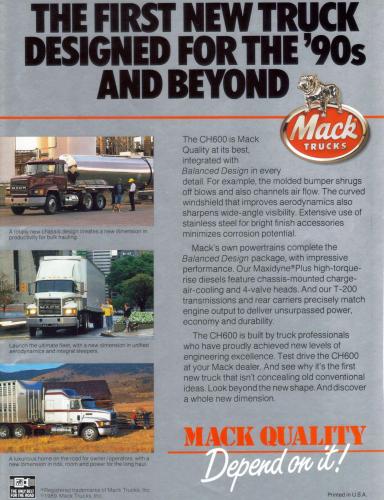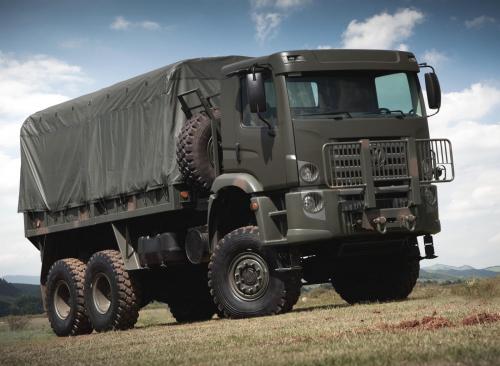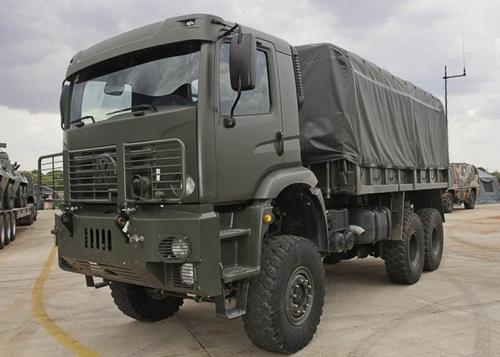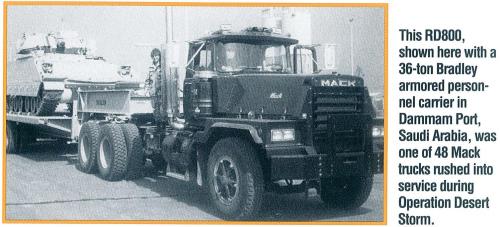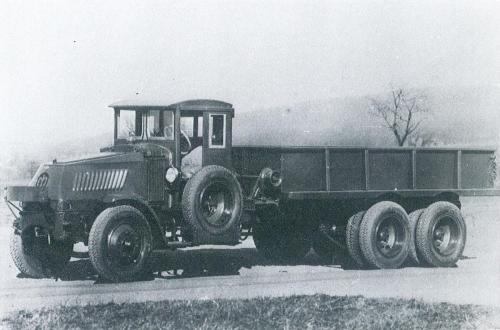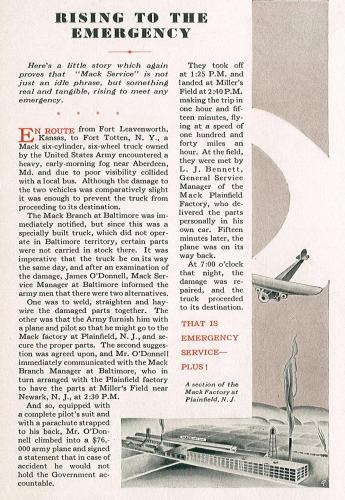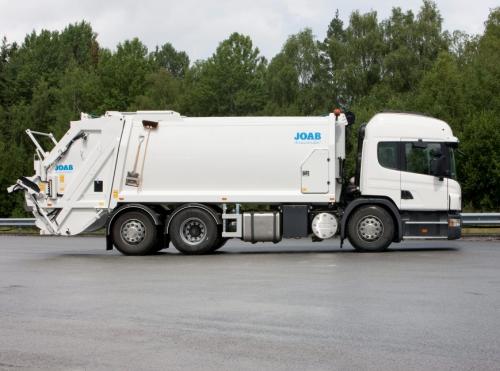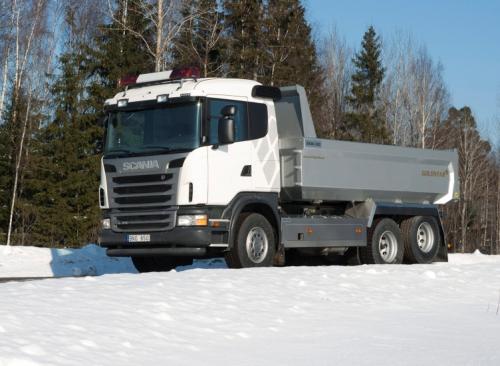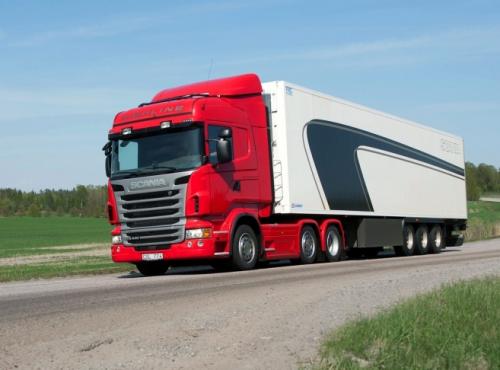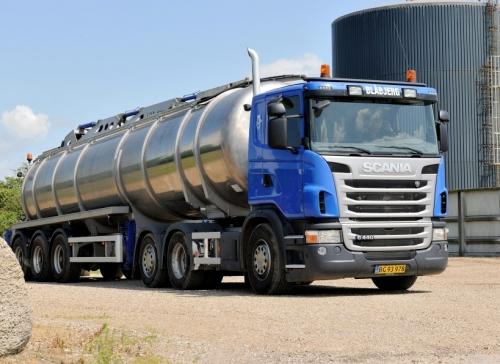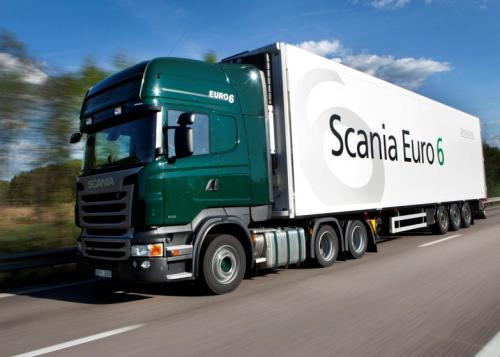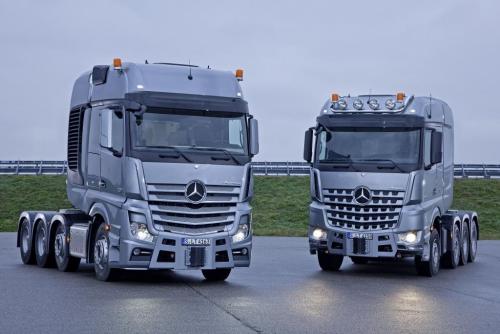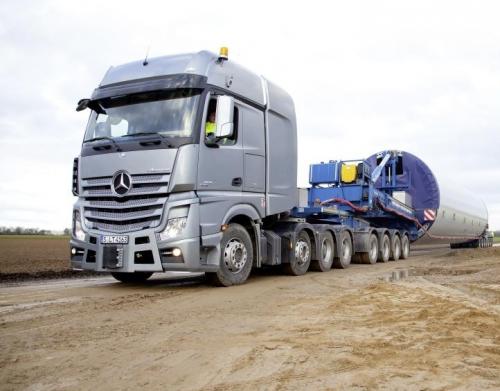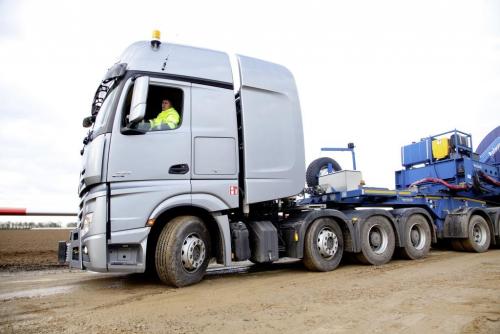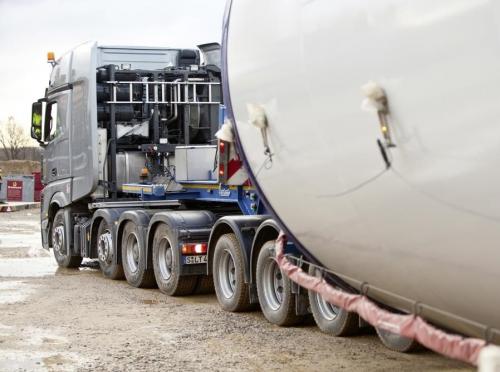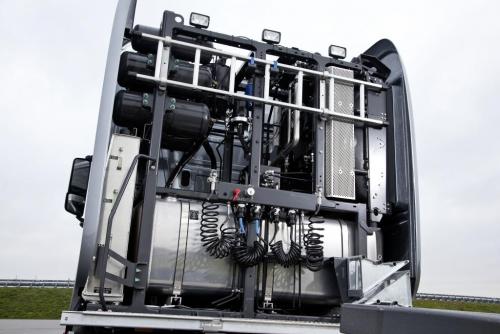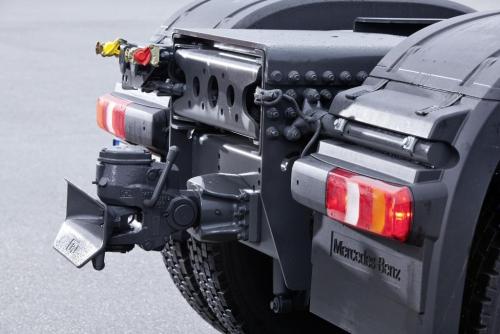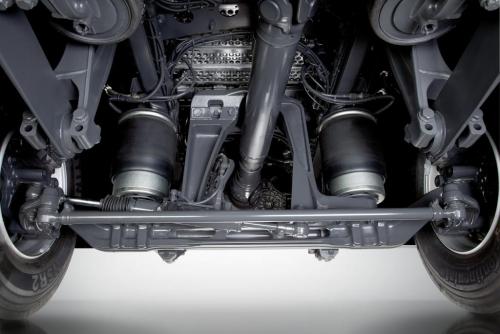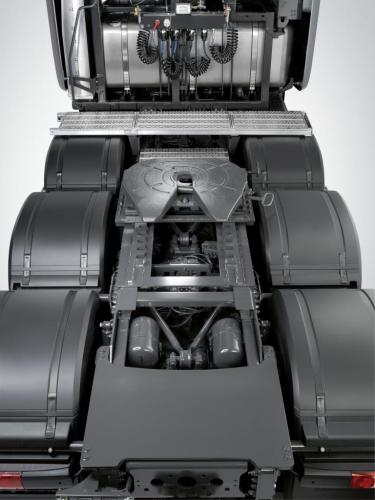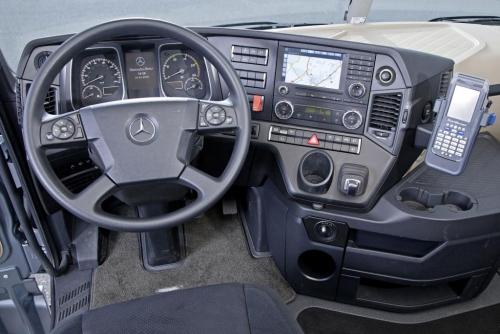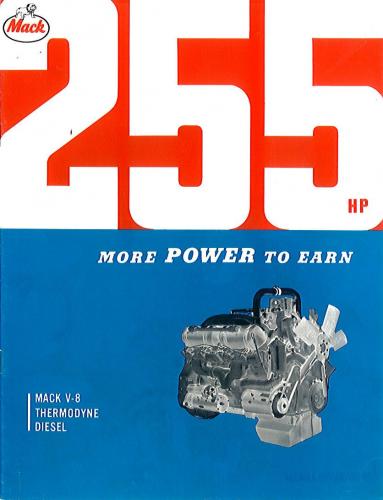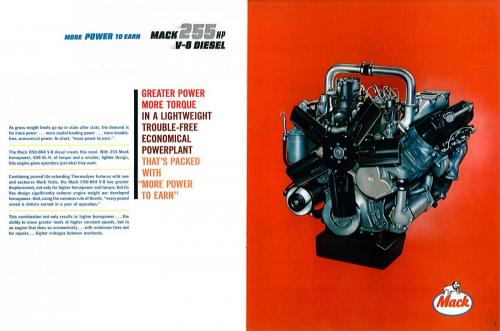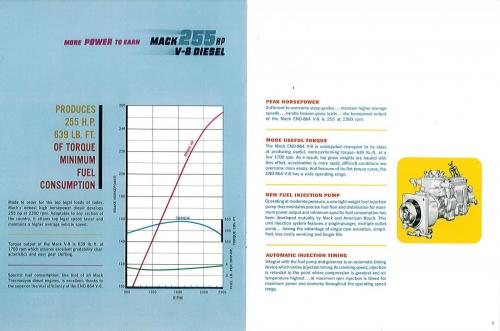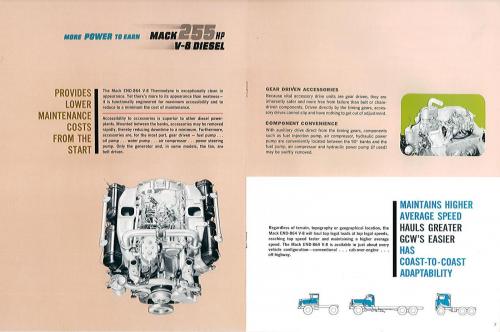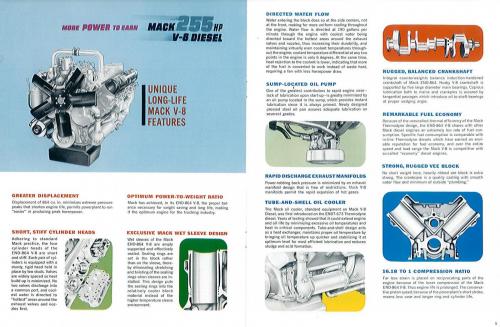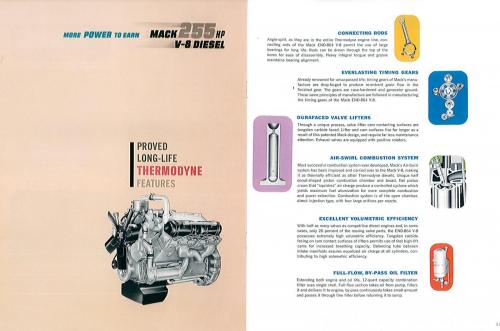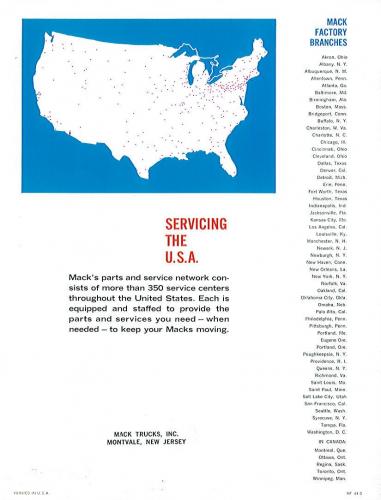
kscarbel2
Moderator-
Posts
17,802 -
Joined
-
Days Won
85
Content Type
Profiles
Forums
Gallery
Events
Blogs
BMT Wiki
Collections
Store
Everything posted by kscarbel2
-
Remember, Brazil is running B-trains (known as Interlinks in South Africa and B-doubles in Australia). And in China, 110,000 to 132,000 pound loads with 6x4 tractors paired with tri-axle trailers is normal. And when you get into the northern mining regions, you'll see ore hauling road trains that gross 375,000 pounds. These trucks never get out of the first three gears.
-
Essentially both Volvo and Mack on-highway trucks have the same chassis, SCR-equipped powertrains, AMT transmission (I-Shift/mDrive that you want) and warranties* (see below). It is troubling that neither brand is proud enough of their new vehicle warranties to display them on their websites (Under a tab labeled “Why buy Mack/Volvo?). A customer shouldn’t have to “Google search” in order to dig up this particularly important information. Apparently they don’t feel strongly about their warranties. Having narrowed your new truck search to Mack and Volvo, and wanting the AMT and air ride suspension**, the difference between the trucks is largely limited to the cab (Both Mack and Volvo promote Meritor drive axles on their on-highway models). So finally, it may be the differing cab design styles that influences your purchase decision. Seeing the writing on the wall when Volvo acquired Mack, most Mack distributors aggressively pursued purchasing the Volvo franchises in their sales territories. As a result, after-sales support representation for either brand is roughly the same. *Mack and Volvo New Vehicle Warranties http://www.macktrucks.com/assets/mack/Service/US10OperatorManuals/PV776-21502481.pdf https://www.volvotrucksemedia.com/ProductDetail.aspx?ProductId=10259&GroupId=542 (click on “View File”) ** The Mack-branded Twin-Y air suspension and Volvo-branded “Blade” air suspension are the same product.
-
The gentleman asked me a question, and I merely answered him. Problem? Mack Trucks was not a foreign entity "decades ago". Renault did not acquire Mack Trucks until 1990, after which, as a result of the "proposed" Renault-Volvo merger (that ended up collapsing because of Volvo), Volvo gained the ability to absorb Mack. During the 1980s when Renault was only a minority stake holder in Mack, Renault supported Mack's growth as the independent U.S. truckmaker it had always been. The ownership of Mack is an extremely valid topic. Anyone not interested in posts mentioning that subject can easily and painlessly skip over them.
-
Launched last fall at the Fenatran international transport exhibition in Sao Paulo, Brazil, MAN Latin America now has a 420 horsepower powerplant option for its Volkswagen Constellation heavy tractors. 19.420 4x2 56-ton GCW 25.420 6x2 56-ton GCW 26.420 6x4 63-ton GCW Powered by an electronically-controlled 8.9-liter 420 horsepower Cummins ISL with 1,850 N.m (1,364 lb/ft) of torque, the powertrain is paired with a 16-speed ZF AS Tronic AMT (automated manual transmission). The Euro-5 spec engines utilize SCR (selective catalytic reduction) technology to meet Euro-5 emissions. The new range of tractors is GCW-rated up to 63 metric tons (138,891 lb). Video: http://www.youtube.com/watch?v=f2rGxXLtFt0 19.420 4x2: http://www.man-la.com/images/stories/produtos/caminhao/ficha_tecnica/pdf/16605/Constellation%2019420%20Tractor%20V%20Tronic%20low.pdf 25.420 6x2: http://www.man-la.com/images/stories/produtos/caminhao/ficha_tecnica/pdf/16607/Constellation%2025420%20Tractor%20V%20Tronic%20low.pdf 26.420 6x4: http://www.man-la.com/images/stories/produtos/caminhao/ficha_tecnica/pdf/16609/Constellation%2026420%20Tractor%20V%20Tronic%20low.pdf http://www.man-la.com/images/stories/library/16335/_MG_5939.jpg http://hdmagazine.com.br/wp-content/uploads/2013/11/MG_5313.jpg What’s interesting is that the Constellation’s 8.9-liter Cummins ISL is rated at 420hp, which runs into the 10.8-liter ISM’s territory. In Europe, the ISL at Euro-5 is rated from 280 to 400 horsepower (260-380 EPA2010), and the Euro-5 ISM from 350 to 445 horsepower (310-425 EPA2007). For Brazil, Cummins was willing to bump up the 8.9-liter ISL to 420hp, where overloading is rare. But for China where Cummins was also asked to supply a near 420 horsepower ISL, and where overloading is still widespread, Cummins felt a 400-plus horsepower ISL needed a displacement increase. This resulted in a new 9.5-liter ISL rated from 292 up to 425 horsepower. Reference: http://www.bigmacktrucks.com/index.php?/topic/32528-cummins-introduces-new-95-liter-isl-series-engine/ http://www.bigmacktrucks.com/index.php?/topic/30250-volkswagen-light-medium-and-heavy-trucks/ .
-
No, Volvo's Mack unit does not have their own engineering. The engineers are all under Volvo Group. The only Mack-focused people are, realistically, the Volvo sales marketing people assigned to the Mack brand. The main reason the CHN landed onto the Volvo VN frame was because Volvo wanted to build Mack and Volvo on-highway models together on the same Volvo chassis at the former White plant in New River Valley, Virginia. Remember, Volvo wants all their brands to use Volvo global components. Volvo Group shut down Mack Trucks' Winnsboro, South Carolina on-highway truck plant in 2001 and moved that production to New River Valley. Then Volvo's "step two" was to place those Mack on-highway models onto Volvo VN chassis, to save money and standardize on the Volvo platform. Why the United States government would allow Mack Trucks to be sold to a foreign entity is beyond explanation. Our government would not allow that to happen with Ford or GM (Chrysler is another story). Our country's economy depends on a solid foundation of essential pillar industries which includes commercial truck manufacture. And Mack Trucks, without argument, was the finest of all American truckmakers.
-
EM5 Rebuild Kit or Engine Swap/Interchange
kscarbel2 replied to wawarod's topic in Engine and Transmission
Parts are readily available for this widely used engine series (Renault model MIDR 06.20.45) from Renault Truck in Europe. The Renault G340 TI Maxter*, for example, was equipped with this engine rated at 338 horsepower. Given that Volvo Group owns both Renault Truck and the Mack brand, that makes this all the more interesting. Your truck, produced in 1998, is not yet 20 years old. I suggest you call Mack customer service (866-298-6586) at Volvo's U.S. corporate headquarters in Greensboro, North Carolina. Provide them with your model and serial number. Explain that you contacted a Mack dealer and were told the parts are NLA. Tell them your truck is a 1998 and that you have a "truck down" situation. I know how the former Mack Trucks would respond. Let's see what Volvo does. Incidentally, Renault Trucks Defense has supplied a 450 horsepower variant of this engine for military vehicle applications. * The G340 TI Maxter http://www.flickr.com/photos/70373000@N04/10884636643 http://www.flickr.com/photos/77228500@N06/6985200866 http://www.flickr.com/photos/77228500@N06/6985200542 http://ads-img.cdn.mbdsrv.com/pa/536-402/192445/3837125/2013090617227_1.jpg -
Originally, BAE wasn't in the picture. Houston-based Stewart & Stevenson (better known for producing specialized equipment for the oil and gas industries) won a US government contract to supply FMTVs (family of medium tactical vehicles) in 1998, an Americanized version (Cat 3116, Allison MD3070PT) of the Steyr model 12M18 from Austria. Armor Holdings bought Stewart & Stevenson's military vehicle division in 2006, and BAE bought Armor Holdings in 2007. And then Oshkosh won the contract away from BAE in 2011 to build FMTVs, despite never having been involved in its development. I like Oshkosh. I don't like the FMTV. For example, the FMTV's Steyr cab, assembled in the US (in order to qualify for the U.S. contract) by McLaughlin Body Company in Moline, Illinois from imported components, is ridiculously expensive.
-
Mack Trucks - Sales Marketing
kscarbel2 replied to kscarbel2's topic in Modern Mack Truck General Discussion
Since this RS/RL has a white steering wheel (which I particularly liked) and early style grille, and what appears to be a steel dash and olive green interior, I would say the year is around 1970 and it has a CA114 cab. It should have half-dogs on the doors, but the Luber-Finer blocks the view. . -
http://www.truckworld.com.au/News/Test_and_Specs_of_CAT_CT630S.aspx http://www.bigrigs.com.au/news/features-of-new-cat-sure-to-impress/2165601/ http://www.cattrucks.com.au/ct630s-a-key-to-cat-growth/ CT630S spec sheet: http://www.cattrucks.com.au/wp-content/uploads/2014/01/CT630S_Specification_Sheet.pdf
-
EM5 Rebuild Kit or Engine Swap/Interchange
kscarbel2 replied to wawarod's topic in Engine and Transmission
So far, I don't see a parts availability problem here. Renault (RVI) never offered complete engine rebuild (in-frame) kits. You're asking for something that never existed. Renault did (and still does) offer piston and liner kits, and gasket kits (sets). Obtaining that plus rod and main bearings will get you started. The qualified mechanic who will be doing your in-frame overhaul should have no problem advising you what parts to order, after they have torn the engine down and made sure you don't have any out-of-the-ordinary problems. Unless you have a Mack mechanic with RVI engine experience, make sure they have a Mack service manual for disassembly and reassembly of this engine. And after 16 years, send that Bosch P7100 pump out to a pump shop to be checked out. -
Mack Trucks - Sales Marketing
kscarbel2 replied to kscarbel2's topic in Modern Mack Truck General Discussion
-
EM5 Rebuild Kit or Engine Swap/Interchange
kscarbel2 replied to wawarod's topic in Engine and Transmission
We talked about the Mack/RVI EM5-290 before. http://www.bigmacktrucks.com/index.php?/topic/31258-mack-rd694p-single-axle-dump/ When you called the folks at Watts Mack and provided them with your truck's model and serial number, did they say the engine parts you need are NLA? (no longer available) -
MAN Latin America, responsible for marketing Volkswagen commercial trucks in South America, has announced an 890 unit order of Constellation-based tactical trucks to Brazil’s Ministry of Defense The order, which includes 6x2, 6x4 and 6x6 configurations, will be delivered this year. The militarized variant of the popular Volkswagen Constellation was introduced last April at the 9th edition of LAAD Defence & Security, Defence and Security International Exhibition in Rio De Janeiro. The 6x6 Constellation model 31.320 has a payload capacity of 10 metric tons (22,046 lb). It can traverse water up to 1.5 meters (59.1 inches) deep, climb a 60 percent grade and negotiate 30 percent side slopes. Its 8.3 liter Cummins ISCe engine is rated at 320 horsepower (PS) and 950 lb/ft of torque. .
- 1 reply
-
- 1
-

-
Mack – Scania Cooperation
kscarbel2 replied to kscarbel2's topic in Modern Mack Truck General Discussion
You are right of course (too much jet lag this month). From the 864 to the E9, the Mack V8s had wet sleeves just as their Scania relatives always have (right up to the present). -
Mack People And Trucks Tackle The Eye Of A ‘Storm’
kscarbel2 replied to kscarbel2's topic in Trucking News
I recall this event as if it was yesterday. Every member of the Mack family was filled with pride. Given a chance to contribute, this event demonstrated how close-knit the Mack family was. For us, this was personal. Mack Trucks personified the values upon which our country was built. If one can't depend on Mack Trucks to come through for America in time of need.........then what's left? After all, America itself was built on the backs of Mack trucks. No other truckmaker can say that. I can't describe with words how proud we were of our organization. Zenon C.R. Hansen, who had passed on a year earlier, would have been proud too. -
Mack People And Trucks Tackle The Eye Of A ‘Storm’
kscarbel2 replied to kscarbel2's topic in Trucking News
Mack Supplies Desert Storm - Scours Nation To Fill Order For 48 Trucks To Haul Tanks To Front January 30, 1991 / The Morning Call Before Allied commander Gen. H. Norman Schwarzkopf ran his hurry-up offense at the start of Operation Desert Storm, Mack Trucks Inc. completed a speedy delivery of 48 tank hauling trucks to the U.S. Army. The RD800 trucks, one of Mack's most powerful, are being used to transport 70-ton M-1A1 Abrams tanks to the front lines, where they await the start of a crucial ground battle. Without the vehicles, each worth about $80,000, the tanks would be forced to travel as far as 200 miles across the rugged desert terrain of Saudi Arabia. The order, which the Allentown company announced yesterday, is somewhat short of a $40 million Army order for 500 tank hauling trucks that a union newsletter reported on Dec. 17. That deal "fell through" because Mack wasn't able to produce the tank haulers by the Army's delivery deadline of Jan. 10 -- five days before the United Nation's deadline for Iraqi President Saddam Hussein to pull out of Kuwait, sources close to the company said. But on Dec. 21, the Army contacted Mack and asked for 48 RD800 vehicles that Mack and its dealers had in stock. Again, the deadline was Jan. 10. "We found ourselves in the middle of a very real emergency," said Sam Carr, Mack's manager of international accounts. "Rather than risk missing our deadline, we decided to complete the order by pulling the RD800s from dealer inventories. "To accomplish this, of course, we needed the cooperation of our dealers." Carr scoured North America and founded what the Army wanted. Worldwide Equipment Inc. of Prestonsburg, Ky., sent 19 trucks; South Kentucky Mack of Somerset, Ky., sent 18; Knoxville Mack of Knoxville, Tenn., sent eight, and M.A. Caribbean Corp. of Caguas, Puerto Rico, sent one. The remaining two were found in Mack's inventory -- one each from Mack Used Truck and Mack Canada. The trucks, which had been outfitted for coal hauling, were then delivered to Lehigh Consolidated Industries Inc. in Stockertown for modification. With help from Mack's purchasing and engineering departments, LCI installed fifth wheels and trailer brake packages. "Purchasing facilitated the paper work to get things rolling, while engineering worked around the clock to make certain all the pieces were properly matched," Carr said. Mack then had Trailer Design and Engineering of Kansas City design and oversee the production of 16.5-ton military-specified trailers. Production was done by Landoll Corp. of Marysville, Kan., and Kalyn Inc. of Gatesville, Tex., whose employees volunteered to work overtime through Christmas and New Year's to meet the Army's need. Carr said that it normally takes a week to manufacture one such trailer. Landoll and Kalyn each completed an order for 24 trailers in less than three weeks. With the tank haulers in place, Carr's logistical headache turned into a nightmare when the Army notified Mack that delivery had been changed from Bayonne, N.J., on Jan. 10 to a day earlier in Jacksonville, Fla. Mack's caravan was rerouted. The Mack tank haulers are now eight time zones away -- and combat ready. Mr. Nikolas Steel-Jessop, an Allentown-based consultant for Mack and former service engineer with Mack International, has joined the troops to assist in driver and maintenance training, Carr said. "Throughout this century, Mack people and Mack trucks have served our country in times of crisis," Carr said. "It's nice to know that despite today's economic hardships, the Mack spirit is alive and well." ------------------------------------------------------------------------------------------------------------------------------------------------------ Mack's contract with U.S. government to make trucks for gulf is put on hold December 22, 1990 / The Morning Call ALLENTOWN,PA. — Mack Trucks Inc. has come close to being drafted into Operation Desert Shield, sources close to the company said yesterday. The U.S. government has been talking with the Allentown-based truck-maker about a $40 million contract for 500 tank-hauling trucks with high-powered E-9 V8 engines, the sources said. Delivery was originally set for Jan. 10 -- five days before the U.N. deadline for Iraqi President Saddam Hussein to pull his troops out of Kuwait. But the deal is now on hold because Mack wasn't able to produce the tank haulers in such a short time, the sources said. "They wanted them faster than we could make them," a union official said yesterday. "Right now, it's up in the air." Mack officials said yesterday there was no deal. Army officials in Washington said they were looking into the contract and had no further information. Employees were informed of the possible deal Monday when United Auto Workers union officials and Mack's top management met at Mack's Allentown world headquarters, according to the Unity News, a UAW newsletter handed out to about 700 employees Thursday at Mack's assembly plant in South Carolina. During the meeting, Elios Pascual, Mack's chairman and chief executive officer, told Bill Casstevens, UAW secretary-treasurer, that the company had received "confirmation" on an order for the 17,000-pound tractors, the union newsletter said. Work on the high-powered V8 engines and transmissions would be done at Mack's 1,500-worker power-train plant in Hagerstown, Maryland. The trucks would be assembled at the 750-employee Macungie, Pennysylvania plant, which was to prepare a special line for their production. Mack subsequently told writers for the union newsletter Thursday that the deal was off, according to a Mack spokesman. But truck industry experts said Mack, like no other truck-maker, would have the capacity to make large tank haulers quickly because it is the only U.S. truckmaker that still makes its own engines and transmissions rather than hiring subcontractors. "The RD800 models used as tank haulers are super big," said Jim Winsor, executive editor of Heavy Duty Trucking magazine. "They are also used to haul logs in Canada and coal in our Appalachian states. They are the backbone of the off-highway business." Throughout Mack's 80-year history, the company's vehicles have maintained a reputation for ruggedness. It was the Mack AC model that the English nicknamed "the bulldog" during its use in France during World War I. In World War II, Mack specialized in military vehicles, including the 6-ton NM 6x6, 7.5-ton NO 6x6, 10-ton NR 6x4 and 5-ton NJU1 4x4 tactical trucks. -
Mack Bulldog / Summer 1991 Allentown, PA – Mack Trucks, Inc., which gained its Bulldog identity during World War I, has again rallied its troops to support America’s military. According to Sam Carr, Mack’s manager of international accounts, Mack people, dealers, customers and suppliers recently joined ranks in a spirited fashion to help the U.S. Army fill an unusual, yet highly critical, order during Operation Desert Storm. Carr said that on December 21, 1990, the Army contacted Mack in search of 48 tractor trailer combinations that would be used to transport huge 70-ton M-1A1 Abrams tanks and other military equipment to the front lines. Without the semis, the tanks would have been forced to travel as far as 200 miles across the rugged desert terrain of Saudi Arabia. The solo trek would have greatly increased the likelihood of costly, dangerous breakdowns and excessive fuel consumption. One of Mack’s toughest Bulldogs, the RD800, was drafted for the job. Mack Trucks was given only 20 days to fill the order. “We found ourselves in the middle of a very real emergency,” said Carr. “Rather than risk missing our deadline, we decided to complete the order by pulling the RD800s from dealer inventories. To accomplish this, of course, we needed the cooperation of our dealers.” After scouring North America in search of the vehicles, Carr found the RD800s that he wanted. Worldwide Equipment, Inc. of Prestonsburg, Kentucky sent 19South Kentucky Mack of Somerset, Kentucky sent 18Knoxville Mack of Knoxville, Tennessee sent eightM.A. Caribbean Corporation of Caguas, Puerto Rico sent oneThe remaining two were procured from Mack’s inventory, one each from Mack Used Trucks and Mack Canada. “The dealers were 100 percent supportive, often sending us vehicles that were already ticketed for customer delivery,” said Carr. Having located the vehicles, which were all straight trucks outfitted for coal hauling, Carr next had to coordinate their delivery to Lehigh Consolidated Industries (LCI), Inc. of Stockertown, Pennsylvania. LCI modified the trucks by installing fifth wheels and trailer brake packages. Carr’s deadline for on-time delivery to Bayonne, New Jersey was January 10, 1991. The logistical headache turned into a nightmare when Carr was notified in the midst of the run that the caravan had been reassigned to Jacksonville, Florida. On top of that, the deadline had been moved up one day to January 9! Despite the odds, and having to arrange for new state permits to accommodate the oversized 12-foot wide trailers, the Army’s newest ally made its appointment. Carr said overcoming the odds for making delivery required a joint operation between the company, the Mack distributors and the vendors. Carr summarized by saying, “It was obvious that the national interest needed to be served, and I was proud to play a part in helping our country win the war. I’m sure that there are countless other example of how good logistic support separated the winners from the losers. Just ask Saddam.” .
-
Speaking of the above article, when I think of U.S. Army Mack six-cylinder, six-wheeled trucks in 1931, the truck in distress was quite probably a T2 Artillery Prime Mover. The T2 was based on the Mack AP and equipped with a six-cylinder 150 horsepower 706 cu.in. engine. With a 4-speed transmission and low gearing, it had a top speed of 20 mph. These trucks were purchased by the Army in 1929. A beautiful example of the AP, the Mack T2's duties for the Army included troop and ammunition haulage, and gun towage. Note the side-mounted winch for pulling guns into position. The disc wheels with 40x8 pneumatic tires made for a sharp looking truck. The Mack T2 was rated at 8 tons and had a curb weight of 22,380 pounds. .
-
I recall an incident involving one of the many Macks that the U.S. Arrmy once operated, but this was much further back, in 1931. As in your recollection, the parts required were expedited via aircraft. Note the parts were expedited directly from the Plainfield, New Jersey plant (http://www.bigmacktrucks.com/index.php?/topic/34219-mack-trucks-the-facilities/). .
-
The Mack-Scania relationship was established in 1950, when Mack Trucks collaborated with Scania (then known as Scania-Vabis) to produce and sell the Mack C-50 municipal transit bus in Europe. The result was the introduction of the Scania-Vabis “Metropol” municipal transit bus in 1953. However for the Scania version of the Mack C-50 city bus, rather than use the 165 horsepower Lanova principal pre-combustion chamber design (indirect injection) Mack END672 engine, Scania chose to use their own model D820 inline eight cylinder 11.3-liter 180 horsepower powertrain which benefited from the superior performance of direct fuel injection. Through an exchange agreement, Scania then provided Mack Trucks with their new open-chamber, direct-injection combustion system, resulting in the legendary Mack END673 “Thermodyne” engine. The direct injection END673 then quickly replaced the END672 incorporating Lanova pre-combustion chambers (energy cell combustion chamber). Note: In the early years, Mack Trucks’ early diesel engines including the ED519 and END672 utilized a Lanova design pre-combustion chamber design. Like Buda and others, Mack Trucks had purchased a technology license from Germany’s Lanova AG, led by the German engineer and Lanova concept inventor Franz Lang. Thus, in essentially what was a technology swap, Scania provided Mack with their advanced proprietary open-chamber, direct-injection combustion design in return for Mack providing Scania with a modern municipal transit bus. Scania and Mack Trucks then went on to forge a unique and close relationship which provided benefits to both companies for many years thru the mid-1980s. From the early 1960’s, Mack turned to Scania for their mid-range engine requirements. Scania produced 106,500 D8 and DS8 7.9-liter engines from 1961 thru 1986, 15,000 of which were shipped to America for installation in Mack trucks. Mack model Scania model Power END475 D8 140hp ENDT475 DS8 190hp ENDT(F)475 DS8 216hp ET477 DS8 210hp ETZ477 DS8 210hp ETZ477B DS8 210hp E4-210 DS8 210hp Mack and Scania then worked together on V8 development. It’s no coincidence the Mack and Scania V-8 engines share displacements. After five years of development, the Mack END(T)864 (1962-1972) entered limited production at Hagerstown in 1962 (Production might have started sooner, but the transfer of engine production from the old Plainfield, New Jersey plant to the modern new Hagerstown, Maryland facility in 1961 did not go smoothly). Using Mack-supplied END(T)864 V-8 engine blocks, Scania began development of its own version in 1962 with running prototypes in 1964. However, the production version of the Scania DS14 V-8 was based on the improved Mack ENDT865/866. Mack introduced the 14.2 liter ENDT865 in 1969, the same year Scania introduced the 14.2 liter DS14. Scania utilized individual cylinder heads on their version (favored in Europe at the time), while Mack used a two-cylinder head design (four heads total). To better achieve economy of scale for Mack and reduce investment costs for Scania, it made perfect sense for Mack to produce V-8 engine blocks for both companies. The only negative was for Scania having to convert English measurements to metric. Scania produced the DS14 up to year 2000. With the introduction of Euro-3 emissions, Scania introduced the 15.6 liter DC16 V-8. The 16.4-liter Mack E-9 is based on a revision of the 14.2-liter ENDT865/866 engine block. The current Scania Euro-6 DC16 V-8, in 520, 580 and 730 horsepower ratings, has a 16.4 liter displacement, identical to the Mack E9. (Mack Trucks jumped from 14.2 liters to 16.4. Scania moved incrementally with the block from 14.2 to 15.6 to 16.4) Scania’s current 16.4 liter version of the Mack/Scania block, rated up to 730 horsepower at Euro-6 (the rough equivalent of EPA2010), utilizes a compacted graphite iron (CGI)* engine block. In meeting Euro-6 (the Euro equivalent to EPA2010), CGI allowed Scania to raise cylinder combustion pressures from 165 bar on the earlier 15.6-liter V8 to 200 bar on the new 16.4-liter engine. Also, Scania XPI** (extra-high pressure injection) now takes injection pressures up to 2,400bar, and they have developed multiple variations for its injection profiles based on an HCCI (homogenous charge compression ignition). Volvo Group terminated Mack E9 V-8 engine production at Hagerstown in 2003. Mack Trucks had planned to re-launch the E9 V-8 in 2003 with Bosch electronic unit pump (EUP) injection. Revisions allowed it to meet the latest EPA standards while delivering superb power and fuel economy. However, Mack engineering was snubbed by Volvo Group. Volvo cancelled the pedigreed Mack E9 in favor of the upcoming Volvo D16 (rebadged as MP10). Had Volvo Group continued production of the Mack E9 V-8 engine, refined with oncoming new technologies including an extra-high pressure common rail fuel injection system and compacted graphite iron (CGI) engine block, the Mack brand would still have a legendary halo product. For a truckmaker in the U.S. market to have the V-8 high horsepower segment all to themselves is a sales manager's dream. *CGI has revolutionized the auto and truck industry. CGI engine blocks and cylinder heads provide 75 percent greater tensile strength, 45% greater stiffness and double the fatigue strength of conventional grey cast iron and aluminum. CGI allows engine designers to improve performance, fuel economy and durability while reducing engine weight, noise and emissions. CGI users now include Aston Martin, Audi, Caterpillar, Chrysler, DAF Trucks, Ford, General Electric Transportation Systems, General Motors, Hyundai, Jaguar, Jeep, Kia, Land Rover, MAN, Navistar, Porsche, PSA Peugeot-Citroën, Renault, Rolls-Royce, Scania, Toyota, Volkswagen, Volvo, VM Motori and Waukesha Engine. ** Cummins-Scania XPI Manufacturing LLP, a 50/50 joint venture, was formed to design, develop and manufacture next generation fuel systems. Scania D14 Series Year Model Power 1969 DS14 01 350hp turbocharged, introduced 1969 at IAA 1971-1976 D14 260hp (normally aspirated for bus applications) 1981 DS14 06 388hp 1982 DSC14 01 420hp intercooled DSC14 02 390hp intercooled 1988 DSC14 06 404hp intercooled DSC14 03 450hp intercooled DSC14 04 470hp intercooled, Bosch EDC (Electronic Diesel Control) 1991 DSC14 10 453hp Euro-1, intercooled DSC14 09 500hp Euro-1, intercooled, Bosch EDC (Electronic Diesel Control) 1994 DSC14 16 500hp Euro-2, intercooled, Bosch EDC (Electronic Diesel Control) 1996 DSC14 15 460hp Euro-2, intercooled, Bosch EDC (Electronic Diesel Control) DSC14 13 530hp Euro-2, intercooled, Bosch EDC (Electronic Diesel Control) 2000 DC16 04 500hp Euro-3, intercooled, Scania PDE Unit Injection DC16 03 580hp Euro-3, Intercooled, Scania PDE Unit Injection 2004 DC16 06 500hp Euro-4, Intercooled, Scania PDE Unit Injection DC16 05 560hp Euro-4, Intercooled, Scania PDE Unit Injection DC16 08 620hp Euro-4, Intercooled, Scania PDE Unit Injection 2009 DC16 19 500hp Euro-5, Intercooled, Scania PDE Unit Injection DC16 18 560hp Euro-5, Intercooled, Scania PDE Unit Injection DC16 17 620hp Euro-5, Intercooled, Scania PDE Unit Injection DC16 21 730hp Euro-5, Intercooled, Scania PDE Unit Injection 2013 DC16 101 520hp Euro-6 (near EPA2010), Scania XPI Common Rail Injection DC16 102 580hp Euro-6 (near EPA2010), Scania XPI Common Rail Injection DC16 103 730hp Euro-6 (near EPA2010), Scania XPI Common Rail Injection Mack Trucks V-8 Range Model Liters Horsepower Torque Note ENDD864 14.16 237 @ 2,000 930 N.m @ 1,400 END864 14.16 255 @ 2,300 866 N.m @ 1,700 END864B 14.16 270 @ 2,300 911 N.m @ 1,800 ENDT864 14.16 325 @ 2,300 1,068 N.m @ 1,600 ENDDT865 14.19 285 @ 1,900 1,308 N.m @ 1,400 ENDT865 14.19 325 @ 2,100 1,491 N.m @ 1,350 ENDT866C 14.19 355 @ 2,100 1,410 N.M @ 1,500 ENDT866 14.19 375 @ 2,200 1,410 N.m @ 1,600 ETAZ1000 16.36 400 @ 1,900 2,060 N.m @ 1,230 ETAZ1005A 16.36 400 @ 2,100 2,060 N.m @ 1,230 EM9-400 16.36 400 @ 2,100 2,061 N.m @ 1,230 (55% torque rise) EM9-400R 16.36 400 @ 1,700 2,061 N.m @ 1,230 (23% torque rise) E9-440 16.36 440 @ 1,800 2,027 N.M @ 1,300 (16% torque rise) E9-400 16.36 400 @ 1,900 1,796 N.m @ 1,300 (20% torque rise) E9-450 16.36 450 @ 1,900 2,027 N.m @ 1,300 (20% torque rise) E9-500 16.36 500 @ 1,900 2,251 N.m @ 1,300 (20% torque rise) EE9-500 16.36 500 @ 1,900 2,000 N.m @ 1,300 Europe – Renault Magnum AE500 EE9-520 16.36 520 @ 1,900 2,250 N.m @ 1,300 Europe – Renault Magnum AE520 EE9-530 16.36 530 @ 1,900 2,250 N.m @ 1,300 Europe – Renault Magnum AE530 EE9-560 16.36 560 @ 1,900 2,450 N.m @ 1,300 Europe – Renault Magnum AE560 EN9-500 16.36 500 @ 1,900 2,173 N.m @ 1,300 Australia / New Zealand EN9-525HP 16.36 525 @ 1,900 2,251 N.m @ 1,300 Australia / New Zealand EA9-575HP 16.36 575 @ 1,900 Australia / New Zealand EA9-610HP 16.36 610 @ 1,900 2,779 N.m @ 1,300 Australia / New Zealand E9-700 (French Army) 16.36 700 @ 2,400 TRM 700-100 tank transporter E9-750 (French Army) 16.36 750 @ 2,400 AMX-30 B2 main battle tank E9-900 (French Army) 16.36 900 @ 2,400 Two-stage turbocharging (4 turbos) E9-1000 (French Army) 16.36 1,000 @ 2,400 Two-stage turbocharging (4 turbos) DME-9-500 16.36 500 @ 2,100 Daytona Marine Engine DME-9-550 16.36 550 @ 2,100 Daytona Marine Engine DME-9-700 16.36 700 @ 2,500 Daytona Marine Engine DME-9-720 16.36 720 @ 2,500 Daytona Marine Engine DME-9-750 16.36 750 @ 2,500 Daytona Marine Engine DME-9-820 16.36 820 @ 2,500 Daytona Marine Engine DME-9-880 16.36 880 @ 2,500 Daytona Marine Engine DME-9-925 16.36 925 @ 2,500 Daytona Marine Engine http://www.bigmacktrucks.com/index.php?/topic/31744-1000-scania-v8/ http://www.bigmacktrucks.com/index.php?/topic/33399-bulldog-in-scania-museum/ http://www.bigmacktrucks.com/index.php?/topic/30165-when-scania-trucks-roamed-north-america/ Should you have a chance to shoot up to Sweden when in Europe, I encourage one and all to take a tour of the impressive Scania museum adjacent to the company's headquarters and main plant in Sodertalje. You'll see a four-foot tall gold Mack bulldog, awarded by Mack Trucks to Scania for quality excellence. http://visitscania.se/en/visits http://www.youtube.com/watch?v=OuxL-iXX-3E http://www.youtube.com/watch?v=IZ9IX4Oa9os http://newsroom.scania.com/en-group/2011/07/01/scania-museum-a-walk-down-memory-lane/
- 31 replies
-
- 11
-

-
1961 Mack N68P Tidewater Mack
kscarbel2 replied to j hancock's topic in Antique and Classic Mack Trucks General Discussion
As I was told, the Tidewater N indeed was an ex-N68F fire chassis (purchased because of its better-than-average condition), and Matt Pfahl did one of his superb ground-up restorations. I met the current owner at Hershey. He also owns a superbly restored 1940 Mack ED pickup. -
America's trucking history belongs to no one individual. This rich history is part of the fabric that defines what makes us Americans, and should be shared with all.
BigMackTrucks.com
BigMackTrucks.com is a support forum for antique, classic and modern Mack Trucks! The forum is owned and maintained by Watt's Truck Center, Inc. an independent, full service Mack dealer. The forums are not affiliated with Mack Trucks, Inc.
Our Vendors and Advertisers
Thank you for your support!


